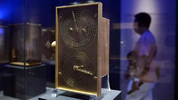- Messages
- 12,449
 A longstanding mystery surrounding the legendary Antikythera mechanism may have finally been solved as a team of researchers reportedly believe that they have determined the actual 'start date' upon which the 2,000-year-old astronomical calculator was based. Considered by historians to be the oldest analog computer ever discovered, the peculiar device was found in a shipwreck off the coast of the Greek island of Antikythera back in 1901. Since that time, the machine has proven to be something of a tantalizing puzzle to scientists, who were initially perplexed by what it was and how it worked. Although those key questions have seemingly been answered, a number of other unknown elements surrounding the device have remained, including its starting point.
A longstanding mystery surrounding the legendary Antikythera mechanism may have finally been solved as a team of researchers reportedly believe that they have determined the actual 'start date' upon which the 2,000-year-old astronomical calculator was based. Considered by historians to be the oldest analog computer ever discovered, the peculiar device was found in a shipwreck off the coast of the Greek island of Antikythera back in 1901. Since that time, the machine has proven to be something of a tantalizing puzzle to scientists, who were initially perplexed by what it was and how it worked. Although those key questions have seemingly been answered, a number of other unknown elements surrounding the device have remained, including its starting point.However, a newly published paper from a group of archaeologists studying the machine has put forward a remarkably precise date which they believe served as the proverbial 'day one' of the device: December 22nd, 178 B.C. The reasoning behind this hypothesis, they say, is that a lengthy solar eclipse occurred on that day and that event was followed by the winter solstice on the 23rd. The two celestial events, the researchers believe, was so inordinately rare that it would have provided the creator of the Antikythera mechanism with a significant and memorable date upon which they could have used as the basis for the machine's intricate calculations.
As one might imagine, with a mystery as complex as the Antikythera mechanism, the newly proposed 'start date' for the device has not been met with some resistance from other researchers. Their main argument against the hypothesis is that, if the astronomical calculator 'began' on December 22nd, 178 B.C., this would cause a number of events forecast by the machine, such as when grapes should be harvested for wine season, to be wildly askew. As such, the findings of the study have already been called into question by experts who point to a pair of papers which each determined that 204 B.C. was the most likely starting point for the machine.
Source:
Study Determines 'Start Date' of Antikythera Mechanism? | Coast to Coast AM
A longstanding mystery surrounding the legendary Antikythera mechanism may have finally been solved as a team of researchers reportedly believe that they have determined the actual 'start date' upon which the 2,000-year-old astronomical calculator was based.
